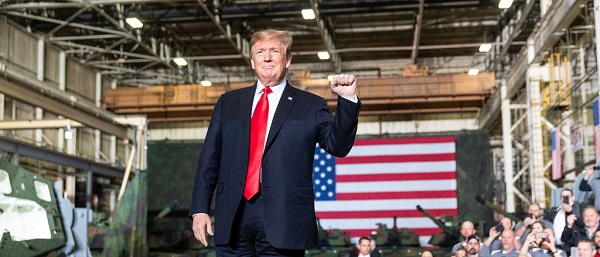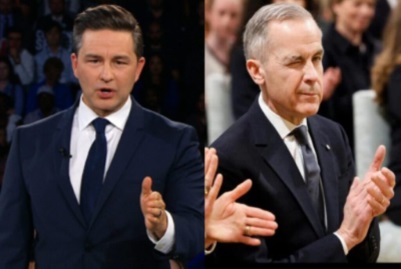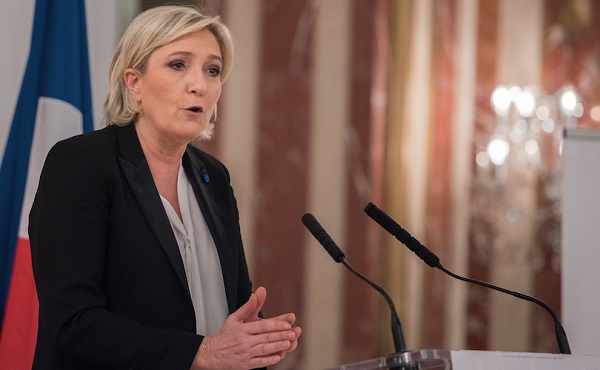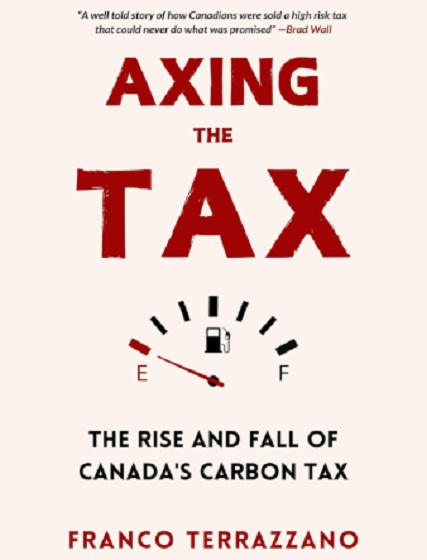Sports
Party for Barty at Australian Open; Sharapova, Kerber out

MELBOURNE, Australia — It was like a party at Rod Laver Arena. A partisan crowd backed Ash Barty, booed Maria Sharapova and celebrated wildly when the first Australian woman in a decade reached the quarterfinals at Melbourne Park.
Rod Laver was there watching, among the tennis greats. Prime Minister Scott Morrison in his green Aussie cap was cheering from the side of the court. It was in vogue for Aussies to be watching. Anna Wintour, too.
It took four match points and 2 hours, 22 minutes before Barty fended off 2008 champion Sharapova 4-6, 6-1, 6-4, reaching the quarterfinals of a major for the first time. She’s the first Australian woman since Jelena Dokic to reach the last eight at the home Grand Slam tournament. No Aussie woman has won it in 41 years.
“It’s amazing that it’s … happening in Australia,” Barty said, reflecting on her first goal for 2019. “I have given myself the opportunity and the chance to play in front of the best crowd in the world on one of the best courts in the world and in my home Slam. There is absolutely nothing better.”
She’ll next play two-time Wimbledon champion Petra Kvitova, who defeated 17-year-old American Amanda Anisimova 6-2, 6-1 in 59 minutes to return to the Australian Open quarterfinals for the first time in seven years.
Another former No. 1 and former Australian titlist quickly followed Sharapova out when Danielle Collins upset three-time major winner Angelique Kerber 6-0, 6-2.
Collins had never won a match at a Grand Slam before coming to Australia — now she’s won four straight and eliminated No. 14 Julia Goerges, No. 19 Caroline Garcia and No. 2 Kerber along the way. She’ll face either 2017 U.S. Open champion Sloane Stephens or Anastasia Pavlyuchenkova in the quarterfinals.
Sharapova won the first set but was struggling with her serve, and finished with 10 double-faults in the match. After dropping the second set — midway through Barty’s nine-game winning streak — Sharapova took an extended break in the locker room and was booed when she came back to court. That’s a rarity for the five-time Grand Slam winner in these parts.
A comeback was always on the cards, and Sharapova nearly delivered — recovering from 4-0 down in the deciding set, forcing Barty to serve it out, and saving three match points when she did.
Two seasons back from her break to pursue a career in cricket, Barty has become Australia’s best chance of producing a local champion since 1978. In her on-court interview, she saluted her former cricket team and said she’d watched on TV the previous day as they qualified for the national final.
“I needed to take that time away,” she said, reflecting on her time out playing cricket. “I feel like I came back a better person on and off the court, a better tennis player.”
Her immediate concern, though, is getting past Kvitova, who beat her in the final of the Sydney International last week.
Kvitova wanted no part of another loss to Anisimova, who beat her last year at Indian Wells and was the youngest American since Jennifer Capriati in 1993 to make it this far at Melbourne Park.
And so she went on the attack early, breaking in the first game. Kvitova was the model of consistency that the two other seeded players previously vanquished by Anisimova — No. 24 Lesia Tsurenko and No. 11 Aryna Sabalenka — were not.
Kvitova had to miss the Australian Open in 2017 because she was still overcoming injuries to her left hand that she sustained in a home invasion the previous month at her place in the Czech Republic. She lost in the first round here last year.
She’s now on a nine-match winning streak, her four wins here come after a title run in Sydney, and is into the quarterfinals here for the first time since 2012.
“When I’m counting the years, it’s pretty long,” Kvitova said. “But, you know, sometimes the waiting time is worth for it. I’m not complaining at all.”
Kvitova broke Anisimova’s serve five times and never faced a break point. She got 86
“She came out with a really solid game plan against me. That kind of threw me off — it was different from my other matches,” said Anisimova, who will go home with her first Grand Slam match wins to her credit, and a much higher profile. “I was hoping that I’d just win a first-round match, so getting this far means a lot to me.”
Frances Tiafoe celebrated his 21st birthday with a spot in his first major quarterfinal, beating No. 20-seeded Grigor Dmitrov 7-5 7-6 (6), 6-7 (1), 7-5. The American took off his shirt, flexed his right bicep and waved to the crowd on Melbourne Arena.
After beating the likes of No. 5 Kevin Anderson and Dmitrov, the road ahead gets significantly tougher for Tiafoe. He next plays No. 2-seeded Rafael Nadal, the 17-time major winner who didn’t let Tomas Berdych on the scoreboard for 1
Nadal beat Australians in the first three rounds and then dominated a long-time rival, winning the first nine games before the 2010 Wimbledon finalist finally held serve and held up his left fist in mock celebration.
“When you’re back, you need a little bit of the luck in the beginning,” said Nadal, who didn’t play a competitive match between the last U.S. Open and the season-opening major in Australia because of injuries. “I’m in the quarterfinals, let’s see what happens now.”
In other action, Canadian Gabriela Dabrowski and partner Mate Pavic of Croatia, who are ranked No. 1 and the defending mixed doubles champions at the Australian Open, are moving on.
The 26-year-old from Ottawa and Pavic toppled the Australian duo of Priscilla Hon and Alexei Popyrin in first-round action 6-3, 6-3.
___
More AP Tennis: https://www.apnews.com/apf-Tennis and https://twitter.com/AP_Sports
John Pye, The Associated Press
Bruce Dowbiggin
Bettman Gives Rogers Keys To The Empire. Nothing Will Change
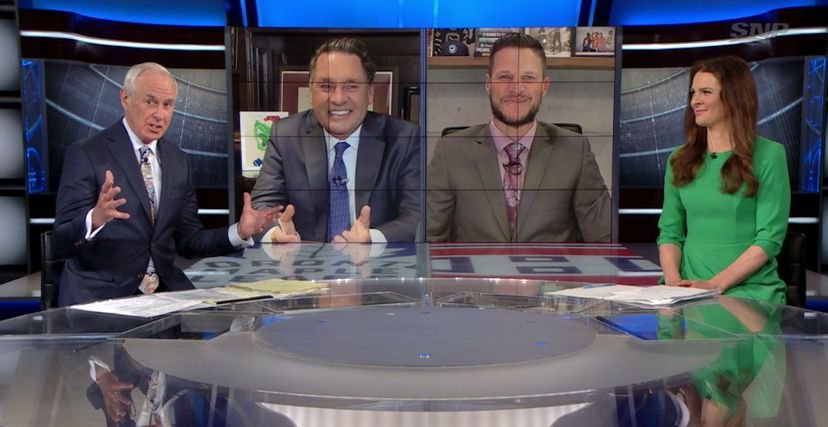
Good news if you like the way Rogers Sportsnet covers hockey in Canada. You’re about to get a whole lot more of it. In a move that sums up Gary Bettman’s unique broadcast philosophy the NHL has awarded the Canadian TV/ digital/ streaming rights to Rogers for the next 12 years. The price tag? 12 billion U.S. dollars (about $16.B CDN dollars).
While the pattern in modern sports broadcasting rights has been toward sharing the wealth among competing bidders— the NFL has six distinct partners— Bettman the contrarian has opted for a different notion. He’s all in with one Canadian partner, and let his critics STFU.
As opposed to the previous CDN national monopoly awarded to Rogers in 2013 this one bestows national rights in all languages across TV, streaming and digital for all regular-season and playoff games, plus the Stanley Cup Final and all special events. This extends to coverage in all regions. There are some concessions for Rogers to sell limited cutout packages, such as the Monday Night Amazon package they’ve created.
Presuming Pierre Poliievre doesn’t get his way with CBC, Rogers will likely piggyback on their time-sharing agreement for Saturday Hockey Night In Canada to get CBC’s network reach. (There remain many hockey fans who still think CBC has the NHL contract. Go figure.)
Translation: there will be no regional packages for TSN to produce Montreal Canadiens, Ottawa Senators or Toronto Maple Leafs games, for instance. But there will be regional blackouts, because nothing says we are proud of our product like denying it to a larger audience. Conn Smythe would be proud.
At the presser to announce the deal Rogers and Bettman were coy about how much they will charge consumers for the honour of being inundated by content in what now seems likely to be a 36-team league by the time the deal expires. Will costs be added to cable/ satellite packages? How much for streaming? With stories circulating that Rogers massively overbid for the package to get the monopoly it’s apparent that the phone company will be turning over every nickel to make it worthwhile.
Fans are apprehensive and over-saturated with hockey content already. For that reason, the NHL is now desperately looking for ways to lessen the tedium of the 82-game regular schedule with midseason content like the 4 Nations Cup or a World Cup format. In Canada’s hockey-mad environment Rogers will have a passionate market, but even the most fervent fans will only spend so much for their fix.
Already, Rogers is trumpeting its re-acquisition with commercials featuring Ron Maclean doing his breathy feels-like-home voice about how Sportsnet is the natural landing spot for hockey until many of us are dead. Bettman made cooing noises about Rogers’ commitment at the announcement.
But let us cast our minds back to 2013 when the last Rogers/ NHL deal was concocted. We were the sports media columnist at the Mop & Pail at the time and much was made that Rogers would be a technological marvel, re-inventing the way we watched hockey. There would be new camera angles, referee cams, heightened audio, refreshed editorial content etc.

As hockey fans now know Rogers dabbled in the brave new world briefly, blanched at the cost of being creative and largely went back to doing hockey the way it had always been done. Taking no risks. On some regional casts that meant as few as three or four cameras for the action.
But if you were expecting dashboard cameras and drone shots you were sadly disappointed. Similarly there was a brief stab at refreshing the pre-, mid- and postgame content. Hipster George Stromboulopoulos was brought in as a host to attract a larger female audience.
But pretty soon Strombo was gonzo, replaced by the anodyne David Amber (whose dad was once the leader of the journalist union at CBC). Women like former player Jennifer Botterill were brought in to change the gender balance on panels. They then acted pretty much like guys, chalk-talking viewers into numbness. Appointment viewing has become a fallback choice.
The move away for anything controversial came in 2019 with Rogers’ axing of Don Cherry’s Coach’s Corner in a flap over the former coach’s continuing ventures into political or cultural content. Maclean slipped the knife into his meal ticket and continued on the show. After time in limbo, doing location shoots, he was returned full-time to the desk.

As we wrote in June of 2022, the one exception to the standard “serious, sombre, even a touch grim” tone is former defenceman Kevin Bieksa. “Bieksa has been a moveable feast. His insouciance with media has become his ragging on the fellow panelists during intermissions that used to be as much fun as skating in July.” His banter with “insider” Elliotte Friedman is now a lone concession to wit on the show.
Intermissions are numbingly predictable, and Rogers’ stable of analysts and play-by-play announcers outside of HNIC is unchallenging to the orthodoxy of PxP being a radio call over TV pictures. Name one star beside Bieksa that has been produced by Rogers’ “safe” broadcast style since 2013. They’d fit in perfectly in a 1980s hockey broadcast. Now compare it with the lively Amazon broadcasts hosted by Adnan Virk and Andi Petrillo.
This leaves a lingering question. What happens to TSN? Many prefer the editorial and studio profile of TSN on Trade Deadline Day or Free Agent frenzy. TSN locked up its stars such as James Duthie and Bob McKenzie when the last deal was signed. But there isn’t enough live content this time to support keeping a full roster anymore. Who will stay and who will go? (TSN’s president Stewart Johnson is the new commissioner of the CFL).
And with Rogers taking full control of MLSE (Maple Leafs, Raptors, Argos, Toronto FC) TSN is left with the CFL and packages of NFL, golf, tennis, some auto racing and international soccer. Is that enough on which to float a network? There have been rumours that Bell, owner of TSN, is interested in divesting itself of the high cost of sports broadcasting. Should that happen— who has the money to replace them?— the effect will be seismic in Canadian broadcasting.
For now, watch how much pressure the NHL puts on Rogers to up its game. More importantly what will happen when Bettman finally retires and the league has a new vision since 1992? Rogers has sewn up its end. Will the audience go with them?
Bruce Dowbiggin @dowbboy is the editor of Not The Public Broadcaster A two-time winner of the Gemini Award as Canada’s top television sports broadcaster, his new book Deal With It: The Trades That Stunned The NHL And Changed hockey is now available on Amazon. Inexact Science: The Six Most Compelling Draft Years In NHL History, his previous book with his son Evan, was voted the seventh-best professional hockey book of all time by bookauthority.org . His 2004 book Money Players was voted sixth best on the same list, and is available via brucedowbigginbooks.ca.
Bruce Dowbiggin
Are the Jays Signing Or Declining? Only Vladdy & Bo Know For Sure
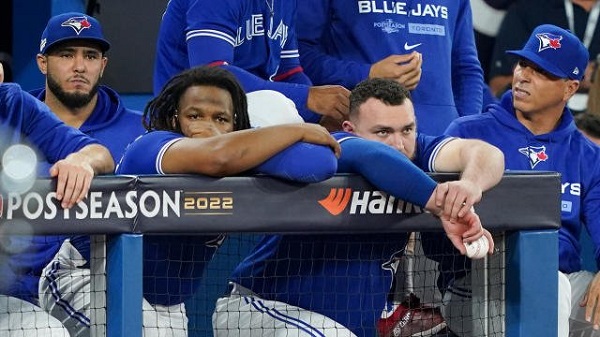

If that name sounds familiar, Teoscar was a Toronto Blue Jay from 2018-2022. He pounded 121 homers in the span as part of the Jays’ order. But when Toronto decided it needed bullpen help he was traded to Seattle in 2022 for pitchers Erik Swanson and Adam Macko. While Swanson has battled injuries and Macko is no-go, Hernandez keeps pounding the ball.
In his one year in Seattle he had strikeout problems but did hit 26 homers with 93 RBIs. In the winter of 2023-24 he signed as a free agent with the aforementioned Dodgers. Batting behind Shohei Ohtani he launched 33 homers and 99 RBIs. He won the All Star Home Run Derby. His key hit in Game 5 of the World Series propelled L.A. to the title. The stacked Dodgers liked him enough to give him a three-year, $66 million contract.
Why are we telling you this? Because the Blue Jays also started their 2025 season at home, matched against the Baltimore Orioles. And while there are reasons to believe the Jays will not replicate their 74-win disaster of 2024, there remain the old bugaboos of injuries and pitching. In the four games against the division rivals they need to beat, Jays’ pitching gave up 24 runs while scoring 18—nine of them in one game.
The splashy acquisition of 40 year old HOF pitcher Max Scherzer has already gone sideways as a bad thumb has put him on the IL. The new stopper, Jeff Hoffman, was rejected on medical grounds by two other teams before Toronto’s money made him healthy. The rest of the bullpen— a disaster in 2024— got off to a rocky start with Orioles hitters playing BP against them. They’ve already DFA’d one pitcher and called up two more from the minors. The re-made pen performed well in Game 4, but how it holds up in their next 158 games is a mystery.
On offence, while their rivals in Boston and New York added sexy pieces to their rosters the Jays were only able to acquire veteran switch-hitting Baltimore slugger Anthony Santander. More typical of their other signees is ex-Cleveland 2B infielder Andres Giminez who in 2023 had the lowest average exit velocity of all AL batters (84.8 mph), and led the AL in percentage of balls that were softly hit (21.7%). He does play a slick second base.
The winter story line for the Jays offence was what to do about Vladimir Guerrero Jr. and Bo Bichette, the erstwhile star-dust twins who were— along with Cavan Biggio— supposed to guarantee titles when they emerged in 2019. Biggio is gone, so the other two carry the credibility of the management team of Mark Shapiro and Ross Atkins. From the outside the Jays seem paralyzed to act.

While the Jays dithered, the price for players like Guerrero and Bichette soared. Using Juan Soto’s Mets $765 M deal as a yardstick Guerrero turned down a Jays offer of just under $600 M, saying he was done talking during the season. If Shapiro/ Atkins had anticipated the market Guerrero would have cost a lot less in 2023-24. If there is no progress by the trading deadline the Jays will be forced to get what they can in a trade.
Shortstop Bichette— a gifted player who battled injuries in 2024—is likewise up for a new deal. He has started strong in 2025 and would command a handsome return in a trade. He says the Jays are waiting to see what happens with Guerrero first. Having sold the pair for years to their loyal fans, having to trade them will be a massive PR blow. And while Jays’ national audience can be an advantage, having a whole country pissed with you is devastating.
The rest of the secret sauce for a Toronto comeback revolves around one of their hitting prospects taking a step forward. Any/ all of Will Wagner, Alan Roden, Addison Barger or Leo Jimenez can have a job if they show their bats are for real. Otherwise Shapiro and Atkins will hope that Dalton Varsho, George Springer and Alejandro Kirk can find a little magic in their aging bats.
A failure to retain talent may prompt fans to recall that Rogers decided that Shapiro and Atkins, who dumped Teoscar, were worthy replacements for the previous GM who’d walked away. The man Schneider and Atkins were hired to improve upon— Canadian Alex Anthopoulos— has made the Atlanta Braves a dominant team. Since AA moved to Atlanta they’ve won 90, 97, 38 (Covid year), 88, 101, 104, 109, 89 games. They’ve won a World Series and two other playoff series. They won six straight NL East titles before injuries sank them last year.
The Braves have developed young everyday superstars like Ronald Acuńa Jr. who don’t get picked off second base. They have built a pitching staff largely from within, not splashy FA signings. They have swagger without cockiness. They are set for years to come.
The Blue Jays? Since AA left they’ve won 73, 67, 32 (Covid), 91, 92, 89, 74 games. They’ve won zero postseason games while missing the playoffs in four seasons. The players they traded are starring for other teams in the postseason. They are again employing an inexperienced company guy as manager.
While it’s true that the sun can’t shine on the same team every day, Jays fans believe it would be nice if the great orb would find their club as it did back in the 1992/93 World Series days. Instead of the reflected glory of past stars winning for other teams. Patience is thin. And time is ticking.
Bruce Dowbiggin @dowbboy is the editor of Not The Public Broadcaster A two-time winner of the Gemini Award as Canada’s top television sports broadcaster, his new book Deal With It: The Trades That Stunned The NHL And Changed hockey is now available on Amazon. Inexact Science: The Six Most Compelling Draft Years In NHL History, his previous book with his son Evan, was voted the seventh-best professional hockey book of all time by bookauthority.org . His 2004 book Money Players was voted sixth best on the same list, and is available via brucedowbigginbooks.ca.
-

 2025 Federal Election18 hours ago
2025 Federal Election18 hours agoResearchers Link China’s Intelligence and Elite Influence Arms to B.C. Government, Liberal Party, and Trudeau-Appointed Senator
-
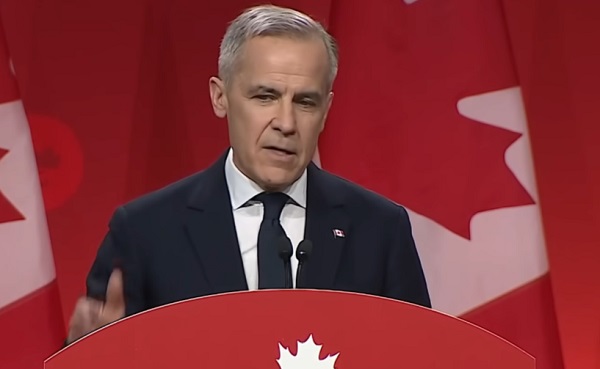
 2025 Federal Election2 days ago
2025 Federal Election2 days agoCommunist China helped boost Mark Carney’s image on social media, election watchdog reports
-

 2025 Federal Election1 day ago
2025 Federal Election1 day agoRCMP memo warns of Chinese interference on Canadian university campuses to affect election
-
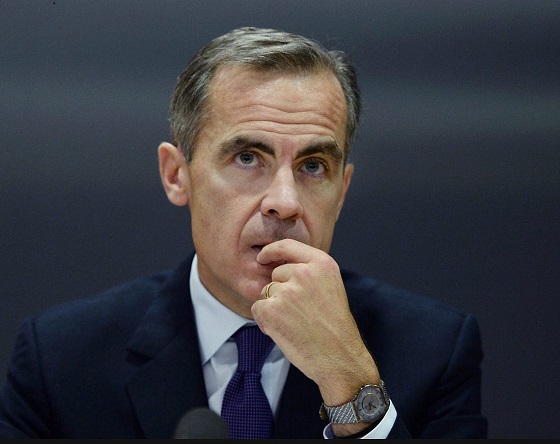
 2025 Federal Election2 days ago
2025 Federal Election2 days agoFifty Shades of Mark Carney
-
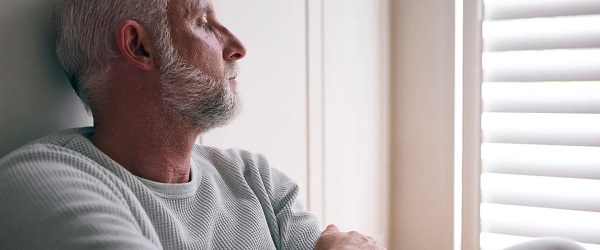
 Alberta2 days ago
Alberta2 days agoAlberta takes big step towards shorter wait times and higher quality health care
-

 Energy2 days ago
Energy2 days agoTrump signs four executive orders promoting coal industry
-

 2025 Federal Election2 days ago
2025 Federal Election2 days agoConservative Party urges investigation into Carney plan to spend $1 billion on heat pumps
-

 MAiD2 days ago
MAiD2 days agoDisability rights panel calls out Canada, US states pushing euthanasia on sick patients




